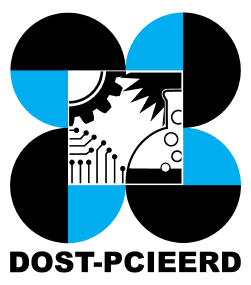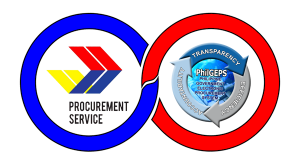Procurement is often confused with purchasing. The two are often used interchangeably and have similar duties, but they have different objectives and serve different purposes. They are both large departments within an organization that comes into play once you have created a new procurement plan or sought to improve your existing one. Suppose you’re striving to ensure your company’s supply chain works like clockwork. In that case, it can be helpful to have a comprehensive understanding of the differences between procurement and purchasing processes. Let’s walk through their differences together!

General Differences Between Procurement and Purchasing
Procurement and purchasing are two separate business processes that relate to the sourcing and acquisition of goods and services. Procurement can be defined as strategic, while purchasing is a cost-reduction function. Purchasing is more focused on short-term goals and the products and services a business needs. Procurement is a strategic process involved in obtaining materials and services for long-term goals. Both of these processes are necessary for a business to thrive. However, these are highly dependent on what a business needs at present and their goals for the future.
Both of these aspects should be approached as separate matters. Through this, a business can distinctively work on its supply chain management, risk mitigation, selection management, and costings. Briefly, Purchasing is centered on value creation and cost reduction. Procurement is an umbrella term used to describe more broad resource acquisition, like supplier relationships, compliance policies, logistics, and overall resource acquisition for both goods and services. We can discuss their differences more as we talk about each topic.
Procurement
In order to ensure timely delivery of the appropriate quality and quantity, procurement entails identifying, shortlisting, selecting, and purchasing appropriate goods and services that are offered by a third-party vendor through direct purchase, competitive bidding, or tendering procedure. The procurement process can be summarized in the following steps which include:
- Market Analysis
- Finding Prospective Suppliers
- Creating a Vendor List
- Recognizing Business Needs for Purchasing and Order Creation
- Requesting Bids
- Assessing Price Quotations
- Selecting Suppliers
- Overseeing Contracts
- Getting Compliance Documentation and Invoices
- Forming Good Supplier Relationships
Purchasing
The collection of tasks involved in procuring products and services a business needs is known as purchasing. A small portion of the larger procurement function is purchasing. Ordering, expediting, receiving, and accomplishing payments are part of this process. The steps in the purchasing procedure are detailed below:
- Receiving a Purchase Order
- Requesting Bids and Assessing Costs
- Sending out Formal Purchase Orders
- Purchasing Goods and Services
- Inspecting the Given Goods’ Quality
- Executing Vendor Payments
Automation of Procurement and Purchasing
The acquisition of goods and services can include numerous decision markers, departments, and a significant amount of documentation because procurement and purchasing processes might overlap inside a corporation. This may result in decision-making delays, process bottlenecks, and increased procurement process complexity. Many organizations use procurement platforms like Shoppable to hold and manage crucial information to support supplier management and have an overview of negotiations and projects.
| Procurement | Purchasing |
| Processes related to obtaining goods and services | Technical activities involved buying goods and services |
| Procedures that occur before, during, and after each purchase | A direct process of buying commodities for business |
| Often used for the production of a business’ products or services (internal) | Used to provide a wholesale system (external) |
| Places priority on an item’s quality than its price | Centered on the item’s price than quality |
| Describes the tasks that need to be accomplished and the items to be acquired to build the business’ products or services | Focuses on specific expenditure and budget concerns |
| Covers sourcing, contract closure, compliance approvals, and recognition of needs to develop products or services | Includes payment fulfillment, expediting, and accomplishing orders |
| Proceeds with an active approach to accomplish the business needs | Follows the restraints and approaches to accomplish smaller resource needs |
| Centered on fulfilling long-term goals | Centered on fulfilling short-term goals |

Impact of Online Procurement Platform Solutions
There are many parties involved in the procurement process, from internal parties like personnel in various departments to external parties like vendors and contract negotiators. Regardless of the distinctions between the two processes, listening in purchasing and procurement calls for rigorous documentation. Instead of single-handedly working on procurement procedures, online procurement platforms help businesses accomplish their resource acquisition faster and more securely. Safety measures in quality observance are also integrated within these platforms, which dismiss the chances of obtaining goods from fraudulent sources.
While a single procurement cycle could continue for a few weeks, an entire cycle could extend for several months or even be repeated if an acceptance bid cannot be found. The efficiency of both tasks would suffer if they were carried out manually. On the other hand, a full digital procedure-to-pay solution enables businesses to keep all purchase and procurement-related documents in a single, centralized database.
Which is better, Procurement and Purchasing?
There is no apparent victor when procurement and purchasing are pitted against each other. Companies of different sizes can choose the strategy which best suits their needs and requirements. Smaller companies might choose to purchase over procurement, considering the goal of keeping their budgets intact. Smaller companies may have the goal of keeping their processes shorter and more manageable within their means. On the other hand, larger companies can benefit more from procurement than purchasing. This is to allow a more centralized component for their corporate strategies.
Productivity is increased by standardizing highly regulated operations like procurement, where information on goods and services is readily available. If you belong to a large-scale company, consider updating your procurement process by using a procurement platform. With the information we shared above, you will notice how easier it would be for your company to acquire goods and services at better prices without compromising quality. A procurement platform can assist you better than going over every vendor you come across for your goods and service needs.
Vendor Relationship Management
The stakeholders in the procurement process include buyers, vendors, and approvers. Each of these is essential to the process of procurement. Enhancing customer relationship management is a tied-and-tried method of enhancing corporate results. Working with suppliers is just as vital as paying attention to consumers, but this realization has only lately started to spread. For corporations to succeed, vendor management is equally crucial. Businesses that manage their suppliers well may keep costs under control, reduce vendor-related risks, provide exceptional customer service, and maximize vendor value over time.
Businesses may reduce their spending on purchases by keeping up with changes in vendor prices and discounts. Companies can negotiate better pricing with vendors when such ties are stronger. Developing enduring ties with vendors also facilitates obtaining frequent price reductions on goods and services. Companies become better aware of price increases which allows them to plan their purchases before new prices are announced.
Procurement Accessibility
Digitizing your procurement process increases visibility and, as a result, performance in the cloud, which is a shared environment. A user-friendly dashboard offers a 360-degree picture of the full procedure-to-payment process is a feature of procurement platforms. Users may quickly view the status of any order or deliverables. This aids a business in increasing efficiency by quickly identifying process gaps and filling them in real time. Additionally, a corporation may receive simple-to-read reports that guarantee you make data-driven choices with better strategic planning.
Digital procurement solutions can streamline procedures, enhance communications and produce more in-depth procurement information. This transition improves efficiency, lowers costs, and decreases mistakes. Along the procurement value chain, digital transformation is having an impact on several domains. This comprises:
- Spending Control
- Cooperation Between Suppliers
- Managing the Lifespan of Contracts
- Margin Improvement
- Management of Risk
- Impact Monitoring
- Collaboration and Information Sharing
- Automated Procurement and Payment
- Automating Payments to Vendors
- Judicious Sourcing
- Category Control
- Expanded Market Knowledge

Procurement and purchasing are frequently mixed up, but we hope this article helped clarify some of the information that may have been confusing at first. Both of these processes are substantial organizational departments that become involved once you develop your business strategies. Knowing how you can use either system can provide an avenue for your business to evolve more effectively. Reviewing how you can better improve your system of acquiring goods can be easier when you consider using a procurement platform. This way, you can monitor your budget and product quality and transact payments online through a centralized system. Businesses thrive when their strategies are intact, so keep updated and stay in tune with digitizing.
You can start centralizing your procurement with a digitized procurement platform! Start your business success with Shoppable Business as a buyer or become one of the platform’s sellers!









